Small houses are common, and many families live in small houses, especially the young people who have just graduated and bought a house. Apartments and condos are the first choice of most young couples, but the narrow apartments often limit some design options and furniture placements. It is vital to learn how to make rational use of every inch of space to maximize the ideal interior design solution to create a comfortable living space. Here, we’ve picked up the practical ways to make your home look bigger. Give it a try.
Contents:
- Use Light Colors
- Let the Natural Light In
- Add Lighting to Brighten up the Interior
- Use Mirrors or Mirrored Pieces Wisely
- Remove the Clutter
- Make Good Use of Stripes
- Choose Relatively Small-Size Furniture Wisely
- Leave A Passage
- Maximize Your Room Arrangement
- Keep it Simple
How to Make Your Room Look Bigger
Actually it is an optical illusion to look the house spacious. We cannot change the actual area of the house but it is possible to transform the room for both function and comfort.
1. Use Light Colors
The light paint colors for the small spaces can reflect more lights and make the room visually open and airy, while dark colors will absorb the lights to get the room even smaller. Based on the best 9 colors that make a room look bigger, most of them are light colors, for examples, pale blue, off-white, green, light gray. Then try to apply lighter colored wall trims and decorative items, to get your room bigger visually.
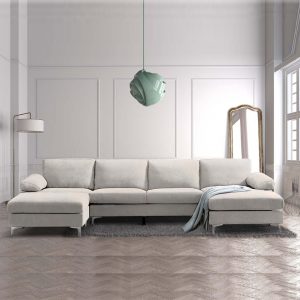
2. Let the Natural Light In
Besides to use the light colors for walls to make the spaces brighter, let the natural light come inside as more as possible, which is the best and cheapest lighting source. Design a wall with large area of windows and hang the curtains higher and wider than the windows so that you can enjoy the whole view and sunshine when opening the curtains.
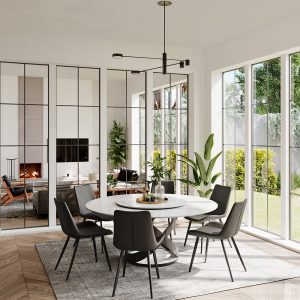
3. Add Lighting to Brighten up the Interior
Once your house owns less natural lights even though you try to maximize the window areas, lighting also can be helpful. Bring the creative lighting inside to light up the entire space and give it life.
4. Use Mirrors or Mirrored Pieces Wisely
Mirror can zoom in on the space area and give your room an open and bright feel. If your house cannot be designed with more windows, use mirrors wisely across the windows to reflect the natural lights to make the space brighter in the daytime, while the mirrors also can reflect the lights of the chandeliers, wall sconces to give a bright space at night. What’s more, if you don’t have enough space to hang the mirrors, consider the mirrored furniture. A mirrored coffee table makes the living room roomy; a mirrored makeup table will add visual spaciousness in your bedroom.
5. Remove the Clutter
Put anything in its fixed place to keep your home organized, which will make the small house comfortable and not so cramped. Imagine that if the magazines, books, coffee cups, decorative trays, remote controls are littered everywhere, how would you feel your room bigger? On the contrary, the overall sense of space will be narrower. Thus, get the books and magazines back to its shelf, the coffee cups in the coffee table or kitchen cabinet, the decorative trays on tabletop, the remote controls in the TV stand to make the home tidy.
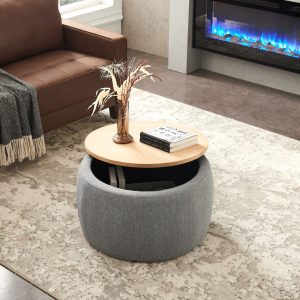
6. Make Good Use of Stripes
Many designers would emphasize the vertical and horizontal patterns to resolve the boring monochrome wall painting. Use the vertical elements, like vertical ship-labs, to enhance the movement and flow of the interior design.
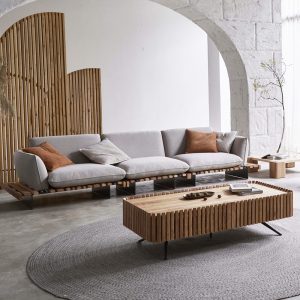
7. Choose Relatively Small-Size Furniture Wisely
Going to measure your spaces is still the first step of home decoration. Then conceive the furniture layouts with the measurements and pick up each furniture for each placement. In a narrow space, it is important to use the furniture wisely. Generally, we tend to choose relatively small pieces to leave enough walking pathway. If you still tend to use the big furniture that you really like, try it but remember to use less of it. Especially a multi-functional big piece of furniture may sometimes save more spaces than using plenty of storage cabinets for single purpose.
8. Leave A Passage
Although you can fill up the entire space with all furniture, don’t do that. In small spaces, try to lean the furniture to the side and stay out of a passage to prevent bumps, especially for those families with kids. In addition, if all the items are stacked, it will make the whole space more cluttered and narrower, and even bring bad mood to you.
9. Maximize Your Room Arrangement
Small areas of houses will test the owner’s ability to arrange the space. For example, place the furniture on the side, use the vertical space for floating furniture and decorations, and reasonably apply the corner furniture to make full use of the corner position for additional storage area.
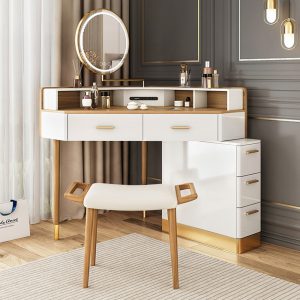
10. Keep it Simple
As we know, less is more! “Keep it simple” means no excessive furniture pieces, no excessive color mixture, no excessive intricate patterns and no more clutters. Therefore, get your small apartment with simple design and get rid of messy layouts.